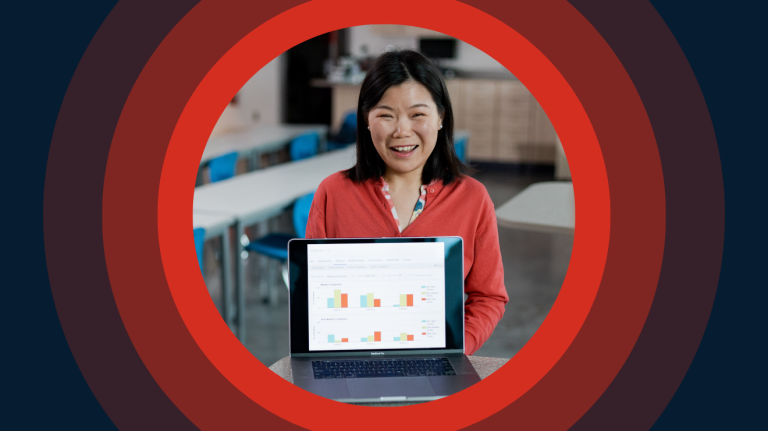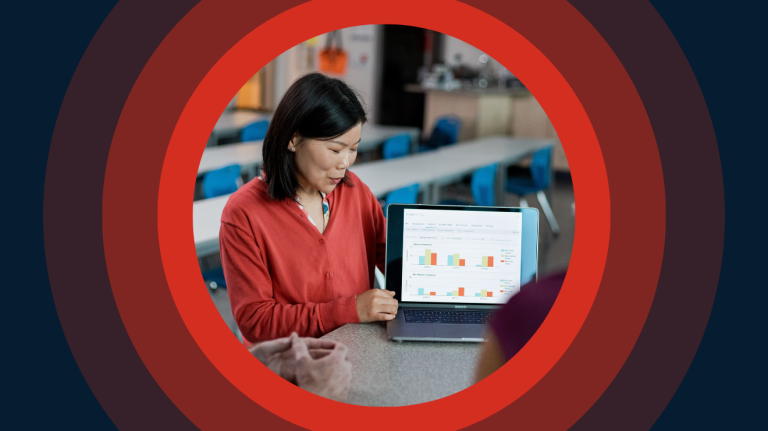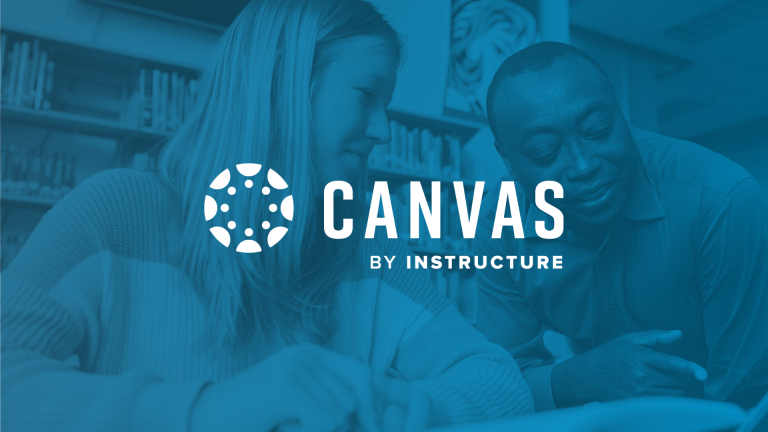Education, as we know it, is evolving. Amidst the buzzwords and trending methodologies, one term stands out — blended learning. This approach, which seamlessly interweaves traditional classroom instruction with online learning, is rapidly transforming the education sector in Australia, New Zealand, and beyond.
Now, we all know fads come and go, and what’s hot isn’t always the best way forward. So, why should you care about blended learning? Because it promises a true revolution for the better. An educational revolution where classroom walls expand to encompass the world wide web, where learning transcends the constraints of time and place, and where each student's educational journey can be uniquely tailored to their needs.
Herein we’ll demystify blended learning and explore its mechanics, advantages, practical implementation, and the pivotal role of technology. We invite you to join us on this exciting journey towards shaping an inclusive, engaging, and future-ready educational landscape.
Deciphering what blended learning actually is
When we talk about 'blended learning', what does that really mean? In essence, blended learning is an educational approach that combines the traditional face-to-face classroom methods of disseminating knowledge with digital activities and independent learning. This innovative model empowers students to learn at their own pace, enhancing their overall educational experience.
This fusion of physical and virtual learning creates an enriching environment where learners can gain knowledge both in class and online. The importance of blended learning in today's educational landscape cannot be overstated. It caters to diverse learning styles, fosters engagement, and, importantly, prepares our students for a digital future. In short, blended learning has massive transformative potential for classrooms across Australia and New Zealand.
Unravelling the mechanics of a blended learning approach
The blended learning model operates through a strategic mix of traditional classroom instruction and online learning activities. It's not just about using technology in the classroom; it's about truly integrating technology into the curriculum to enhance every student’s learning experience.
At its heart, a successful blended learning model features a few key elements.
First, face-to-face instruction takes place, where teachers impart knowledge, lead discussions, and provide immediate feedback. This maintains the human connection and peer interaction that are vital to learning.
Then, there's the online learning component. Here, students can access digital educational content at their convenience. This could include pre-recorded lectures, interactive quizzes, or research tasks. This component is designed to be flexible and self-paced, allowing students to explore topics more deeply when they’re ready to do so.
Thirdly, there's an element of 'student control' over time, place, pace, and path. Students have some control over when and where they learn, the speed at which they progress, and the learning pathway they wish to undertake. This fosters a more personalised learning experience, accommodating the unique learning styles and speeds of each student.
Finally, regular assessment and feedback are critical. Both online and offline assessments are used to gauge students' understanding of the subject matter. Feedback, either instantaneous through digital platforms or in-person, helps students identify areas for improvement.
Implementing this blend of in-person and online elements effectively requires careful planning, a well-structured curriculum, and appropriate technology. When done right, a blended learning system can truly revolutionise the way teaching and learning occur. It creates a more dynamic, interactive, and personalised learning environment that ultimately leads to better student outcomes.
Reaping the benefits of a blended learning approach
Alright, we've explored what blended learning is and how it functions. But why should educators be excited about it? What, exactly, does it bring to the table? Here's where we dive into some of the most exciting benefits a blended learning approach can offer both educators and students.
First off, blended learning enhances student engagement. By incorporating digital platforms, interactive activities, and multimedia content, it makes learning more dynamic and engaging. This, in turn, fosters a deep interest in the subject matter and motivates students to actively participate in their learning journey. It can also allow students to explore, and be excited by, activities they may not be able to perform themselves. As an example, science students could experience what happens when the first few alkali metals are mixed with water by doing the experiments in person. Later, they could then watch footage of what happens when the other alkali metals are mixed with water.
A second benefit of blended learning is that it caters to diverse learning styles and paces. Not all students learn the same way or at the same speed, and this is where blended learning truly shines. It allows for customised learning pathways, offering students the flexibility to learn at their own pace and in a manner that best suits their learning style. Importantly, by delivering some educational content digitally, students can take any additional time they may need to truly master subjects without fearing their peers might think them ‘slow’. For example, students struggling to understand a concept explained by their teacher in person could watch a recording of the explanation. When doing so, they could re-wind, pause, and slow down the recording to exactly match their pace of learning and to allow them to focus on the specific elements they’re struggling with. They could also consume explanations in several formats to improve their understanding and knowledge retention.
A third advantage of using a blended learning approach is that it facilitates truly personalised learning at scale. The online component of blended learning provides an abundance of data on student performance, enabling teachers to tailor instruction to meet the specific needs of each student. It makes room for targeted interventions and individualised learning plans, ensuring no student is left behind. And it allows educators to provide a wide variety of learning materials for students to choose from without the teacher having to sit down one-on-one with each student to deliver completely individualised lessons.
A fourth, and much beloved, benefit of the blended learning model is that it encourages self-directed learning. By giving students control over their learning pace and path, blended learning fosters a sense of responsibility and independence. It equips students with critical skills like time management, problem-solving, and self-motivation, which are invaluable in the real world. It also allows students the space to explore the things that really excite them, so they can come to truly understand what they enjoy and then pursue the education to match those interests. This is especially beneficial when students begin choosing high school subjects and tertiary courses.
And lastly, at least for this article (otherwise we might be here all day!), blended learning can lead to improved student outcomes. For instance, the blend of face-to-face instruction and digital learning provides students with a well-rounded educational experience that helps them grasp concepts more effectively. And this isn’t just some nebulous, anecdotal observation. Research has shown that students in a blended learning environment often outperform those in traditional classrooms.
For example, a review in BMC Medical Education found that the blended learning approaches, in comparison with traditional lectures, enhanced students' knowledge, problem-solving ability, and learning satisfaction. As another example, a meta-analysis published in Frontiers in Psychology concluded that blended learning outcomes are significantly higher than traditional learning outcomes with a medium effect size, and learners hold significantly more positive attitudes toward blended learning than traditional learning.
Embracing a blended learning approach isn’t just about keeping up with the times — it's about unlocking a whole new world of teaching and learning possibilities.
Bringing blended learning to life in the classroom
With advantages like that, we know many educators are keen to get started with blended learning in their own classrooms. But it may also be a daunting prospect, especially if you’re not doing anything digitally at the moment.
Well, worry no more. We've compiled a list of practical strategies to help you bring blended learning to life.
Firstly, let's look at a common technology ecosystem that's helped thousands of educators bring blended learning to life in their classrooms.
- Learning management system (LMS): This is the central hub for course materials, course communications, assessment activities, and general course management.
- Video conferencing: A solution for synchronous learning online in which students and teachers can see and interact with each other, in real-time.
- Video and audio management system: An asynchronous video and audio solution that simplifies the creation and secure sharing of pre-recorded lectures, student presentations, microlearning video/audio, on-demand video/audio communications, and recorded live class sessions.
Connecting these technologies provides instructors with consistent features and functions that interoperate seamlessly across tools, so every instructor can deliver the best possible online learning experience that is tailored to their courses.
Once you've got the technology set up, there are lots of blended learning models and approaches you could employ. Here are some of the most popular, which you might like to explore.
- Station rotation model: One of the most popular blended learning strategies is the station rotation model. Here, students rotate through different stations on a fixed schedule. These stations could be face-to-face teacher-led instruction, online learning activities, and independent or collaborative work. This model provides opportunities for personalised learning and maximises the use of classroom time.
- Flipped classroom: A flipped classroom is a brilliant approach that helps make the most of face-to-face time with students. In this model, students first engage with new material online at their own pace, usually at home. Then, classroom time is used to deepen understanding through discussion with peers and problem-solving activities facilitated by the teacher.
- Project-based learning: This approach integrates online tools and digital resources into project-based learning approaches that you may already be using. Students could research online, collaborate using digital platforms, and present their projects using multimedia tools. This approach makes learning engaging and relevant and helps students learn to use digital tools as well as master the main concepts you're wanting to teach them.
- Online discussions and collaborative tools: A wonderful way to encourage student interaction and collaboration is through online discussion boards and collaborative tools like Google Docs. This can stimulate critical thinking, allow shy students to participate actively where they might sit out during face-to-face discussion, help students form stronger relationships with other students that share their interests, and let learning extend beyond the classroom walls.
- Leverage educational apps: There are numerous educational apps available that can supplement classroom teaching. Apps for flashcards, quizzes, mind mapping, and more can make learning fun and interactive. There are even educational apps for specific topics, like Reading Eggs and Wolfram Alpha, that educators can leverage to personalise the learning experiences of their students.
If you're looking for case studies of successful implementations of blended learning models, universities are a great place to look. Over the last decade, increasing numbers of unis have taken steps to build standardised virtual learning environments for their campuses that can support any pedagogy and that anyone can use on any device in any location. The goal? To enhance teaching and learning by enabling faculty to independently reshape learning experiences in their courses while giving students more flexibility and control over their own learning. And, as it turns out, these virtual learning environments help universities achieve the same goals in a fully online learning environment or in a hybrid of both online and in-person classes. And when integrated to work together, they make it easier for educators to blend synchronous and asynchronous learning in their courses.
One example of this is Our Lady of Mercy College, which was an early adopter of the blended learning approach. They used Canvas, Canvas Studio and Zoom to wonderful effect to create an adaptive, virtual learning environment that teachers and students alike love.
As you explore this valuable educational approach, just remember, there's no one-size-fits-all approach to blended learning. What works best would depend on your students' needs, the resources available, and your teaching style. Experiment with different strategies, be flexible, and adapt based on what works best for your classroom. The blended learning journey is all about discovery and innovation, so buckle up and enjoy the ride!
Embracing the future with blended learning
As we peer into the future of education, the prominence of blended learning is crystal clear. It isn't just a fleeting trend, but rather a paradigm shift ushering in the 'new normal' in education. It marries the best of both worlds, balancing traditional teaching with innovative digital tools to create a learning experience that's as enriching as it is versatile.
By adopting a blended learning approach, educators open up a world of possibilities for their students, fostering a more engaging, personalised, and empowering learning environment. Technology is the enabler, powering up classrooms with a blend of synchronous and asynchronous learning experiences that cater to the diverse learning needs of students.
Embracing blended learning is not just about keeping up with the times—it's about shaping a brighter, more inclusive future for education. So let's step forward with confidence, armed with the tools and strategies we've explored, and make blended learning a reality in our classrooms.
Canvas LMS and Canvas Studio Can Help Provide Your Blended Learning Solution
Reliable, intuitive, and born in the cloud, Canvas LMS is the most widely used learning management system by colleges & universities in North America and the fastest-growing LMS worldwide. It is the LMS to save educators time, influence retention, and create the foundation for modern, world-class learning to take place every day.
Delivering dynamic, engaging learning experiences, unrivaled ease of use, and 99.99% uptime ensures the instant connection between students and educators anywhere, anytime. Take your institutions’ online learning, adoption, interactivity, and student engagement to the next level with Canvas LMS - the key connector and core of the Instructure Learning Platform.
Related Content
 the_five_essentials_for_vocational_learning_platforms.png
the_five_essentials_for_vocational_learning_platforms.pngBlogs
 signs_its_time_to_rethink_your_learning_platform.png
signs_its_time_to_rethink_your_learning_platform.pngBlogs
 from_admin_tool_to_growth_driver.png
from_admin_tool_to_growth_driver.pngBlogs
